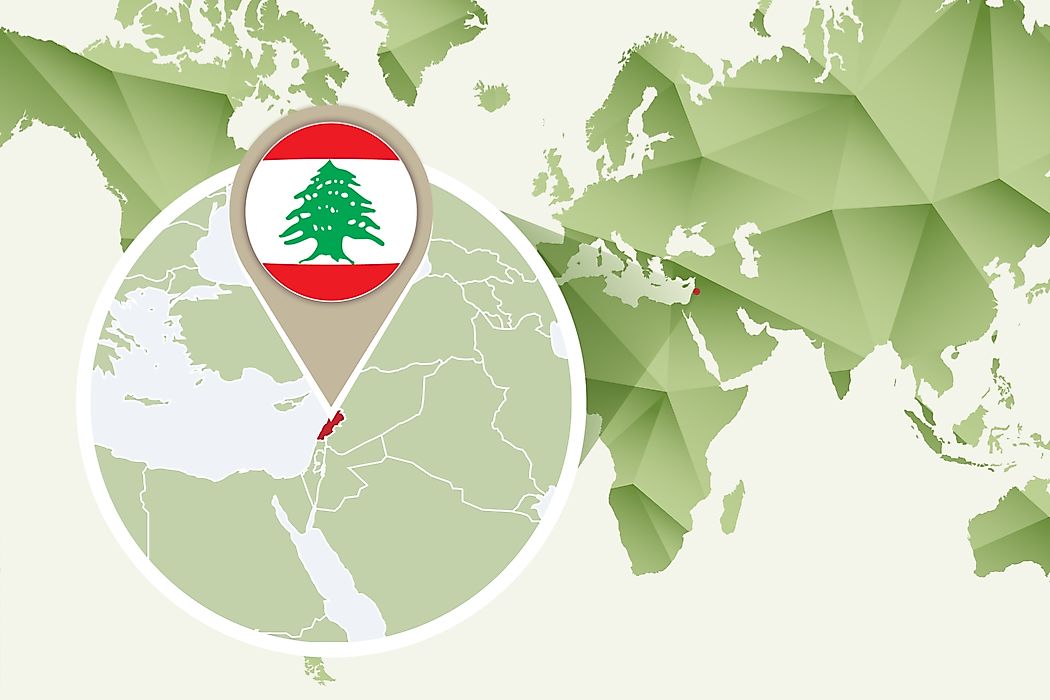What Continent is Lebanon In?

The Middle Eastern country of Lebanon is located in the western portion of the continent of Asia. Officially known as the Lebanese Republic, this sovereign state is bordered by the Mediterranean Sea, Syria, Cyprus, and Israel. The country’s rich history was facilitated by its location at the crossroads of the Arabian hinterland and the Mediterranean Sea thus shaping a cultural identity of both ethnic and religious diversity. Lebanon measures about 4,036 square miles making it the smallest recognized country found in the entire mainland of the continent of Asia.
History of Lebanon
The earliest evidence of civilization in Lebanon dates to more than 7,000 years back predating recorded history. The country was home to the Phoenicians/Canaanites as well as their kingdom; this was a maritime culture that prospered for more than 1,000 years. Around 64 BCE, Lebanon was governed by the Roman Empire before becoming one of Christianity’s leading centers of the empire. The Maronite Church, which is a monastic tradition, was established in Mount Lebanon range. Even though the region was conquered by Arab Muslims, the Maronites held tightly on to their identity and religion. However, the Druze, a religious group that was newly established on Mount Lebanon created a religious divide which lasted for many years. The Maronites re-established communications with the Roman Catholic Church during the Crusades thus asserting their communion with Rome; such ties are believed to have played a significant role in influencing Lebanon into the modern era. Between 1516 and 1918, the region was under the Ottoman Empire’s rulership. However, following the empire’s collapse post the First World War, the region was administered under the French Mandate of Lebanon. The country attained its independence in 1943 and has been a member state of the Arab League as well as the UN among others.
Postwar Lebanon
Even though the country is small in size, the Arab world has dramatically influenced the modern-day Lebanese popular culture. Before the Lebanese civil war which took place between 1975 and 1990, the region experienced a period of significant prosperity and calm which were mainly driven by banking, tourism, commerce, and agriculture. Due to the country’s diversity and financial power in its prime days, it was dubbed the ‘Switzerland of the East’ around the 1960s or the 'Paris of the Middle East' as Beirut, the country’s capital, attracted numerous tourists. Following the war, the country employed extensive efforts to rebuild its national infrastructure and revive its economy. Despite having these economic problems, the country has the highest GDP per capita and Human Development Index in the Arab World.
Lebanese Culture
The country’s culture is a reflection of the legacy of different civilizations dating back thousands of years. Lebanon was formerly home to the Canaanite-Phoenicians before the region was subsequently occupied and conquered by the Arabs, Persians, Crusaders, Fatimids, Greeks, Assyrians, Ottoman Turks, Romans, and the French giving the Lebanese culture diversity since it evolved through borrowing from all these groups. The country also features a diverse population which is made up of a variety of religious and ethnic groups; this has contributed significantly to Lebanon’s cuisine, festivals, and music styles. Regardless of the country’s ethnic, religious and linguistic diversity, the Lebanese share a culture that is almost similar. The universally spoken language is Lebanese Arabic while literature, food, and music are deeply rooted in the larger Arab and Mediterranean Levantine norms.











